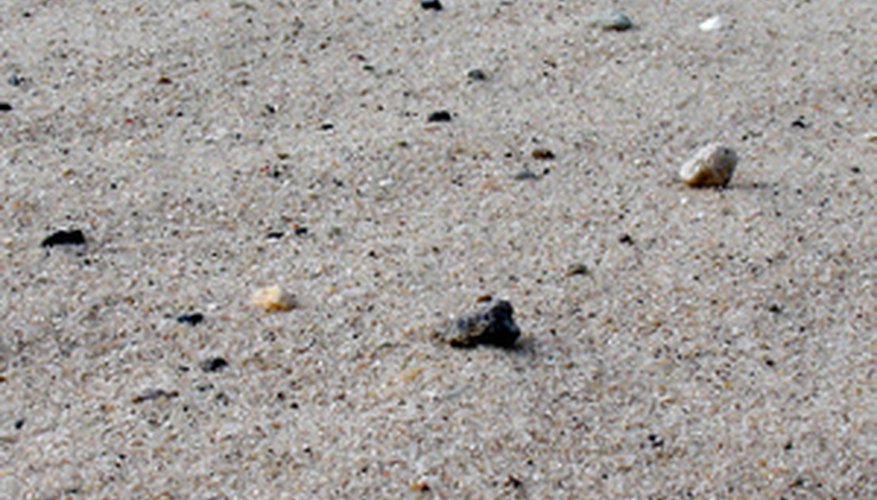Mixing sand into your acrylic paint is useful for a variety of reasons. Sand provides interesting surface texture for furniture, art projects and walls, and it also adds traction for slippery floor surfaces. If you've never mixed paint and sand before, however, you may not know how to approach the task. It's important that you use the right type of sand, and that you mix the appropriate quantities for your desired texture.
Measure 227gr. of clean silica sand in measuring cups. Silica sand is the most common type of sand in the world, but clean silica sand isn't found everywhere. The sand you get from a public beach contains silica sand, but it is also mixed with stones, crushed shells, dirt and debris. Clean silica is sold at hardware and home improvement stores. The 227gr. measurement is based on a full gallon of paint. One gallon equals 3629gr., and 227gr. is 6.25 per cent of 128. If you are using a different quantity of paint, measure 6.25 per cent silica sand accordingly. This percentage is a light base texture, providing a suede finish. It's best to start with a light texture and gradually add more silica as needed, rather than trying to dilute a mixture that is overly textured.
- Mixing sand into your acrylic paint is useful for a variety of reasons.
- It's best to start with a light texture and gradually add more silica as needed, rather than trying to dilute a mixture that is overly textured.
Pour the 227gr. of silica into 1 gallon of acrylic paint.
Mix the acrylic paint for five minutes using a stir stick. Mix slowly to avoid bubbles in the paint.
- of silica into 1 gallon of acrylic paint.
- Mix the acrylic paint for five minutes using a stir stick.
Test your sandy paint on a piece of scrap. A 6.25-per cent-silica content provides subtle texture. If you want more pronounced texture, you can add additional sand until your test paint is rough enough for your needs.
